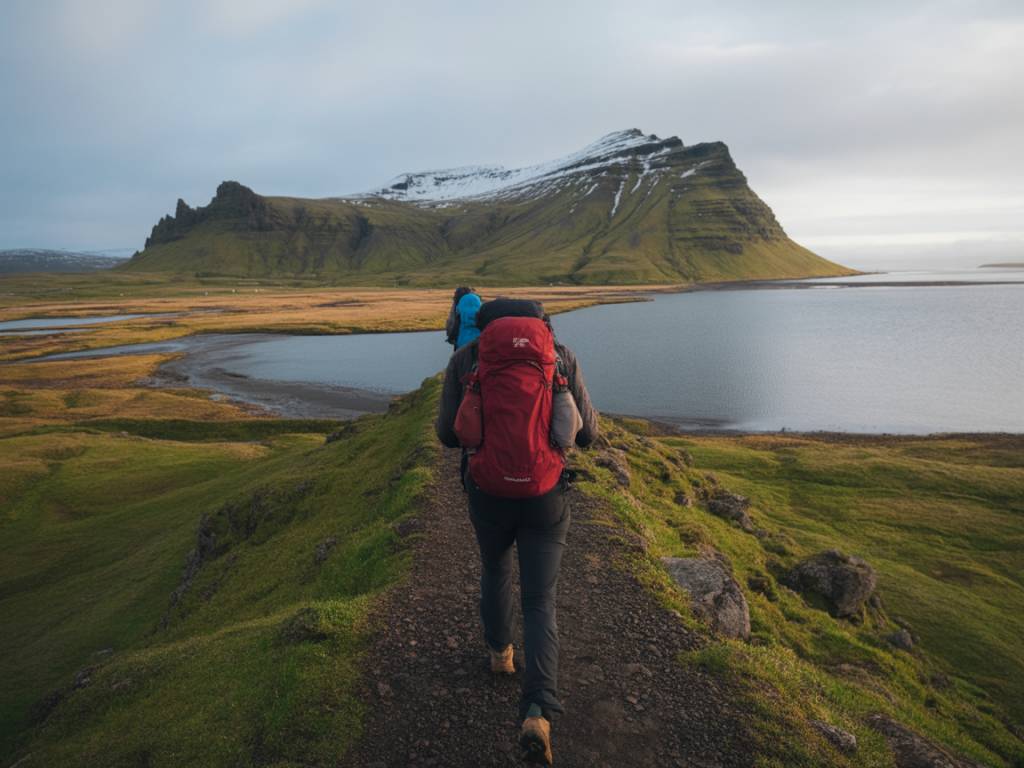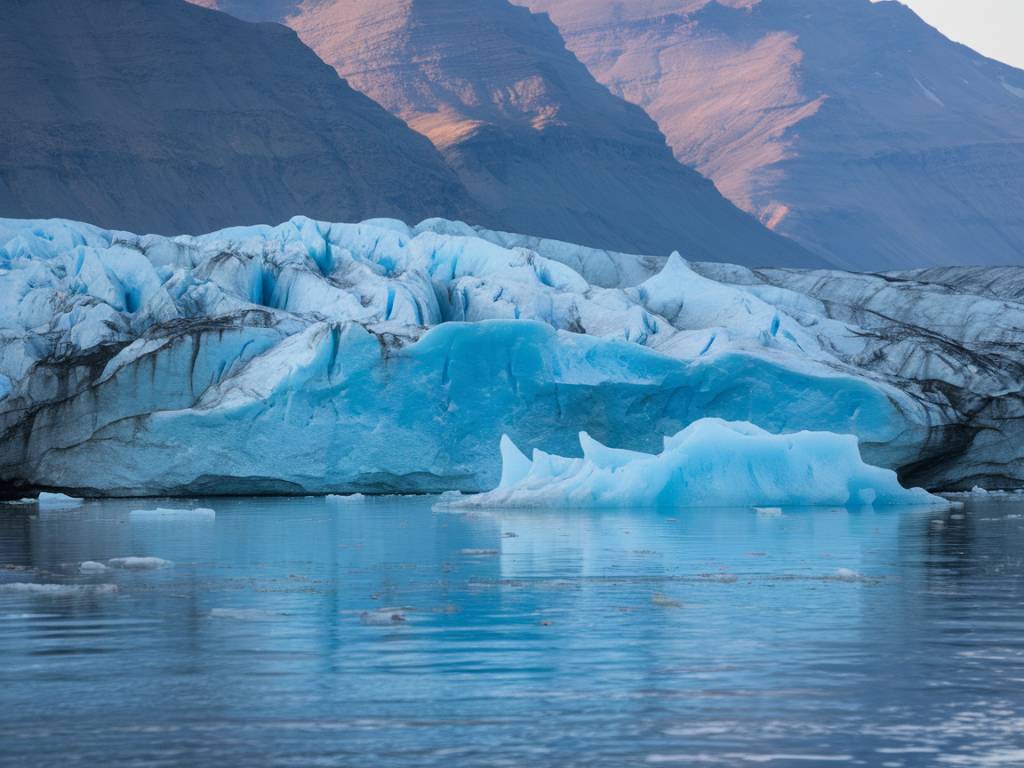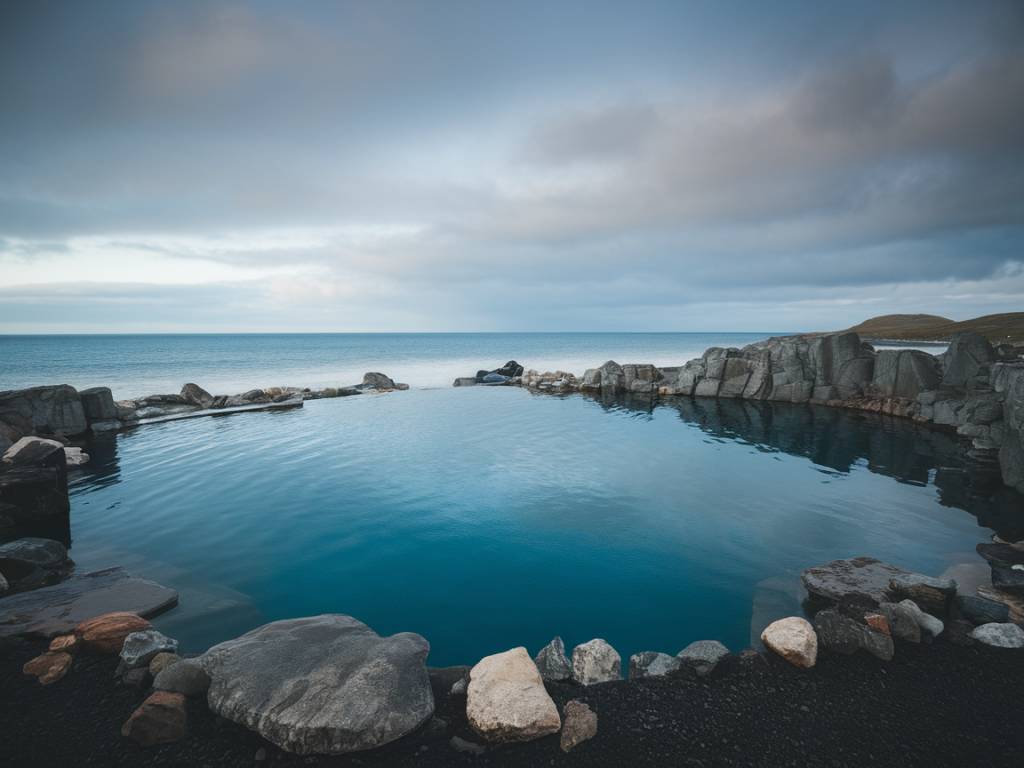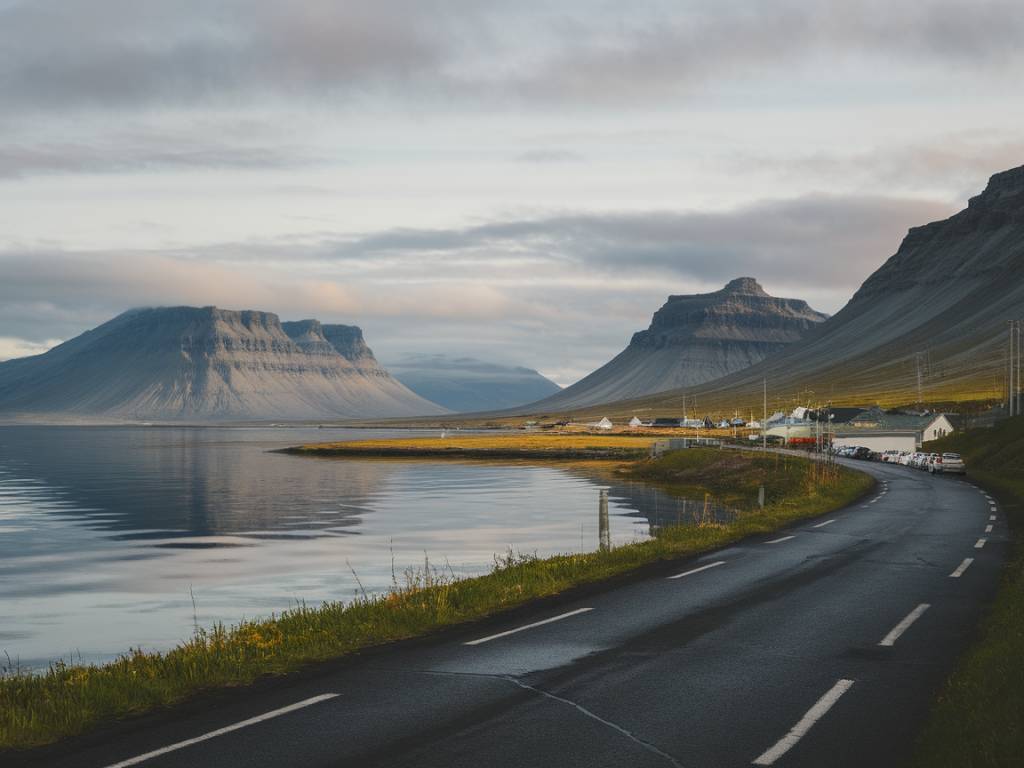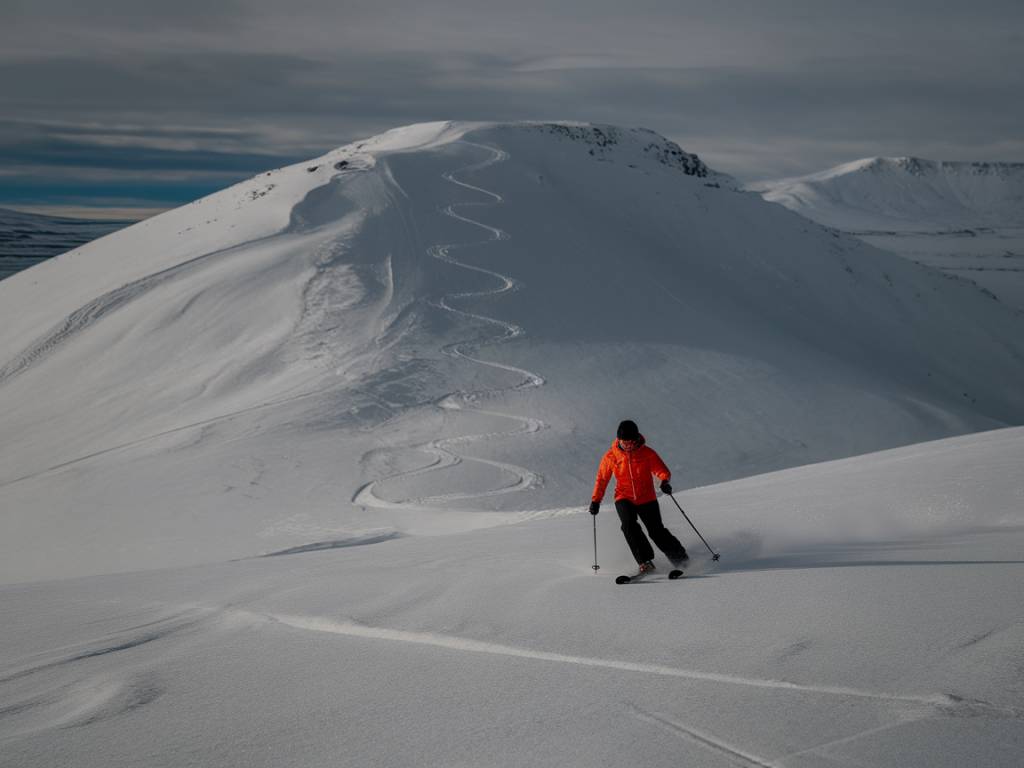Spring Treks: Awakening Landscapes and Solitude
Spring in Iceland is a time of transition. While snow still lingers across the highlands in April and early May, the lower elevations begin to thaw, revealing mossy lava fields, budding landscapes, and waterfalls gushing with freshly melted ice. This is a shoulder season, which means fewer tourists and a sense of peaceful discovery that I always find captivating. The trails are quieter, and the light stretches gently into the evening as daylight hours increase sharply.
One of my favorite spring hikes is the Glymur Waterfall Trail, located just an hour north-east of Reykjavik, in the Hvalfjörður fjord. At 198 meters, Glymur is Iceland’s second-highest waterfall and the trail leading to it is a moderately strenuous 7-kilometer loop. What makes this hike exceptional in spring is the contrast between the melting snowdrifts clinging to the canyon walls and the rush of water cascading into the depths below. Just be aware that you need to cross a river using a log bridge — only installed in summer — but in early May, it’s sometimes already in place if conditions allow.
Summer Treks: Midnight Sun and Remote Highlands
Summer is undeniably the prime season for hiking in Iceland. From late June to early September, the interior highlands become accessible, offering the most iconic trekking routes in the country. The constant daylight during peak summer is a novelty that changes how you hike — I’ve set out at 10 PM under a golden sky that never truly dims. It’s magical and disorienting all at once.
The most legendary of all Icelandic routes is undoubtedly the Laugavegur Trail. Stretching over 55 kilometers from Landmannalaugar to Þórsmörk, this multi-day trek traverses rainbow-colored rhyolite mountains, obsidian lava fields, steaming hot springs, glaciers, and green valleys. You can do it in 3–4 days, staying in mountain huts (which must be booked far in advance) or camping. In my experience, late July is the ideal time: the snowfields have largely melted, river crossings are manageable, and the trail is lively but not overcrowded. Be prepared for rapidly changing weather, even in midsummer — I’ve hiked in sunshine, rain, and sleet, all in a single afternoon.
For those who want an even longer journey, the route can be extended by continuing from Þórsmörk to Skógar via the Fimmvörðuháls Pass, a 24-kilometer trail that climbs between two glaciers (Eyjafjallajökull and Mýrdalsjökull). It’s more challenging and often snow-covered well into July, but the views from the top, including the newborn craters formed in the 2010 eruption, are unforgettable.
Autumn Treks: Fiery Colors and Crisp Air
Autumn arrives quickly in Iceland. By late August, the moss and low vegetation in the highlands take on a kaleidoscope of reds, oranges, and yellows. The air becomes crisp, and the light softens, lending the landscape a theatrical aura that I find particularly photogenic. Many trails remain accessible through September, though the weather becomes more unpredictable and huts begin to close for the season.
A hike I particularly enjoy in early September is around Þórsmörk itself — accessed by bus or 4×4 vehicle. This sheltered valley, framed by glaciers and mountains, is a paradise of birch woods and braided rivers. One remarkable option is the Valahnúkur Hike, a relatively short but steep trail leading up to a panoramic viewpoint over the valley. The minimal elevation (grab your camera!) and the range of landscape in such a compact area make this ideal for a full afternoon’s exploration. You can pair it with nearby trails like the Tindfjöll Circle or Kattarhryggir ridge for longer walks.
Note that by late September, snowfall may begin to close parts of the highland routes, and weather conditions can deteriorate fast. I always recommend checking with local rangers or weather services before setting out.
Winter Treks: Frozen Wonders and Northern Lights
Winter hiking in Iceland is a completely different experience. With snow covering most trails and daylight limited to a few hours in the heart of winter, the focus shifts from long treks to shorter, guided hikes that explore frozen caves, glaciers, and geothermal areas. While you won’t be doing multi-day treks in the highlands, the landscapes you will access are no less awe-inspiring — and there’s a real sense of intimacy in exploring Iceland’s frozen beauty while the aurora dances overhead.
One winter hike I always recommend is a guided trek on the Sólheimajökull Glacier. Equipped with crampons and harnesses, you’ll follow a certified glacier guide into a world of ancient blue ice, crevasses, and ice sculptures shaped by wind and meltwater. While this is not a traditional hiking route, it’s physically engaging and offers insight into the ever-changing glacial landscape. Tours are available year-round, but winter brings fewer crowds and a more pristine feel.
Another magical — and often overlooked — winter walk is the geothermal trail in Reykjadalur Valley, near the town of Hveragerði. Accessible only with proper gear and caution during snowy months, it’s still feasible on days with stable weather. The reward at the end of this 3-kilometer climb is a soak in a natural hot river under the snow-covered hills, with steam rising all around. The contrast between snow and volcanic heat never ceases to amaze me.
Tips for Multiseason Trekking in Iceland
If you’re planning hikes year-round, a flexible approach is essential. The weather can shift rapidly, especially in mountain areas, and some trails may become inaccessible with little warning. Here’s what I’ve learned over the years:
- Always check road and trail conditions: The Icelandic Road and Coastal Administration and SafeTravel.is provide real-time updates on conditions, closures, and forecast alerts.
- Layering is critical: Even in summer, temperatures can hover around 5–15°C (41–59°F), and rain or wind is a constant factor. Waterproofs and wicking fabrics are mandatory.
- Book huts early: For multi-day summer treks like Laugavegur, huts book up months in advance. Camping is an alternative but requires more gear and exposure to the elements.
- Consider guided treks in shoulder or winter seasons: Not only for safety, but also for local knowledge, which can make all the difference in interpreting the land around you.
- Respect the environment: Stick to marked trails and avoid stepping on fragile moss or geothermal crust. Iceland’s landscapes are both resilient and delicate — a paradox that demands thoughtful travel.
Each season in Iceland offers its own palette of colors, sensations, and stories. Whether you’re standing in the sun-drenched rhyolite hills of Landmannalaugar or hiking beneath the eerie glow of the northern lights on a glacier, the experience is deeply intimate and unlike anywhere else on earth. After years of trekking across Iceland, I’m still surprised by how no two hikes feel the same — even when retracing steps I’ve walked many times before.

